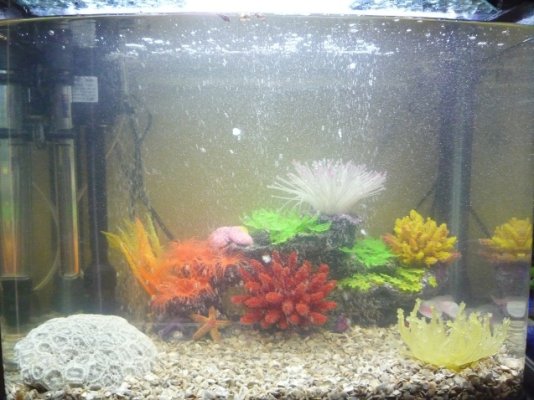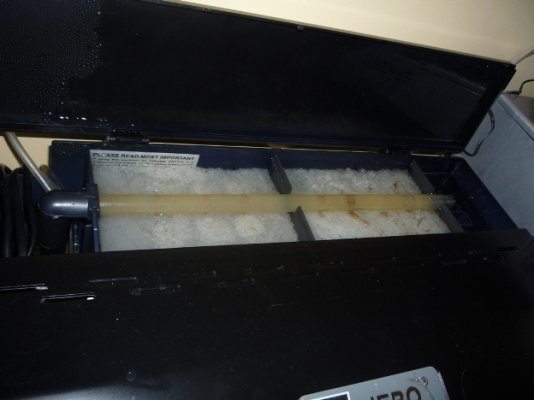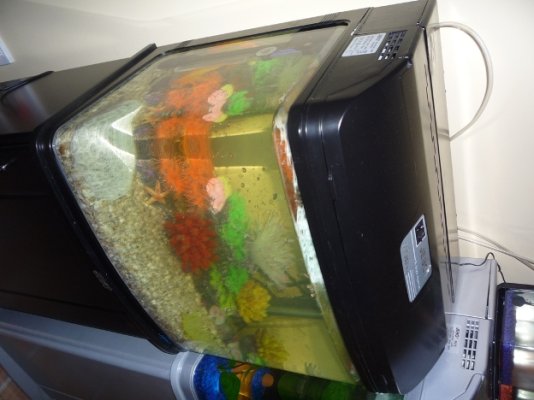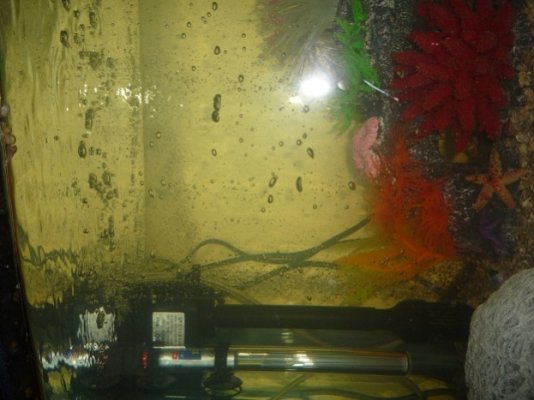Dan_Forbz
Aquarium Advice Activist
hello there, i just today set up a saltwater aquarium ( there are no fish)
so far this tank is a 20g, that used to have freshwater fish in it, so firstly i took everything out and cleaned the whole tank down with a cloth ( no chemicals)
after the tank was spotless, i decided to wash some shell grit in a bucket and have placed that in, plus all the happy little ornaments
for saltwater, i have decided, living so close to the beach, i will use that as my source of water. i have after placing everything filled the tank up with salt water from the ocean, so far i havent tested it, due to not having a test kit, which will be coming within a week.
i am planning on getting a breeding pair of clownfish for this tank, firstly is this size tank big enough for the two? (dont worry, the fish wont be going in until the tank is absolutely perfect. ive read that the salinity needs to be 1.026 for clownfish, is this right??
so , back to the tank, it is at the moment running the pump, with air flowing through, and the light on ( i have placed a piece of glass inbetween the water and the light, to prevent rusting of the light attachment.
so after i have obtained the test kit and a hydrometer, i plan on getting the water results right, for two clownfish can anyone tell me what water parameters they prefer? also temperature.
current look of tank: at this present time the tank is reasonably cloudy, i presume from the salt stirred and the shell grit having to settle. i presume this will settle in a few days.
can anyone tell me what im doing wrong, last this i want is a heap of dead fish, and me having to go back to freshwater due to utter embarrassment.
 please feel free to reply, i assume im making a lot of mistakes
please feel free to reply, i assume im making a lot of mistakes 
so far this tank is a 20g, that used to have freshwater fish in it, so firstly i took everything out and cleaned the whole tank down with a cloth ( no chemicals)
after the tank was spotless, i decided to wash some shell grit in a bucket and have placed that in, plus all the happy little ornaments
for saltwater, i have decided, living so close to the beach, i will use that as my source of water. i have after placing everything filled the tank up with salt water from the ocean, so far i havent tested it, due to not having a test kit, which will be coming within a week.
i am planning on getting a breeding pair of clownfish for this tank, firstly is this size tank big enough for the two? (dont worry, the fish wont be going in until the tank is absolutely perfect. ive read that the salinity needs to be 1.026 for clownfish, is this right??
so , back to the tank, it is at the moment running the pump, with air flowing through, and the light on ( i have placed a piece of glass inbetween the water and the light, to prevent rusting of the light attachment.
so after i have obtained the test kit and a hydrometer, i plan on getting the water results right, for two clownfish can anyone tell me what water parameters they prefer? also temperature.
current look of tank: at this present time the tank is reasonably cloudy, i presume from the salt stirred and the shell grit having to settle. i presume this will settle in a few days.
can anyone tell me what im doing wrong, last this i want is a heap of dead fish, and me having to go back to freshwater due to utter embarrassment.




